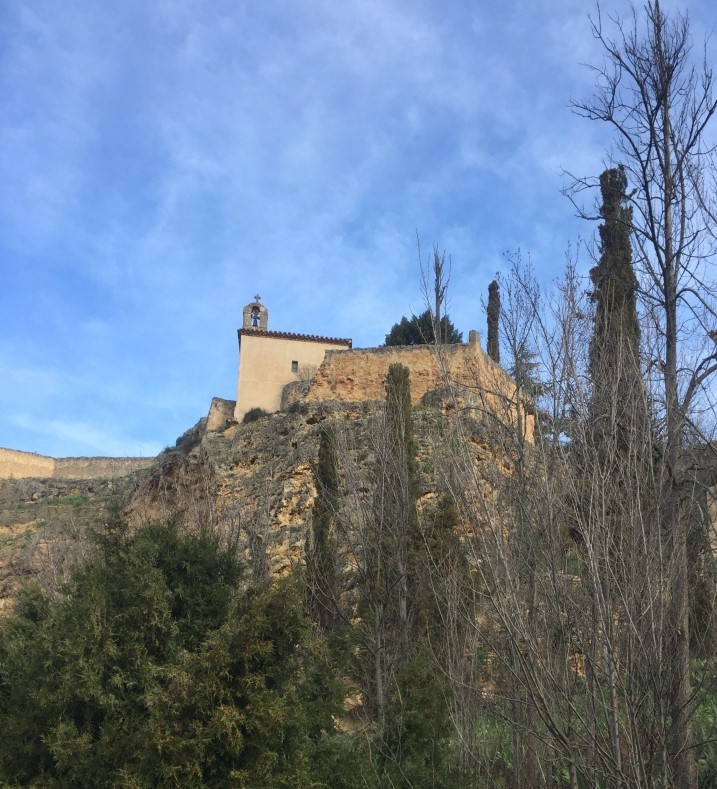Items of Interest Archives
-
January, 2021
-
December, 2020
-
November, 2020
-
October, 2020
-
May, 2020
-
February, 2020
Caves and Bunkers - Sr Patty Andrew's Sabbatical Journey
As a young adult in the aftermath of the Vatican II Council I read several of the published Documents. What I find most attractive in the Document - Gaudium et spes – The Church in the Modern World, is its deep sense of inclusion of all humanity. 'It is the joys and the hopes, the griefs and anxieties of all, that are the concerns of us, the followers of Christ.' Preface #1
This year during the latter part of March and early April I had the joy of visiting the landscapes which shaped several of the notable mystics of Europe. While in Spain I attended the Palm Sunday Liturgy in the Cathedral of Segovia. The palm I held during the Liturgy was a beautiful piece of olive branch.
On the pilgrimage we had the opportunity to visit the Carmelite monastery garden of Segovia frequented by St. John of the Cross centuries ago. While in the garden I laid my small piece of olive branch to rest praying that I would be awakened to the rise of the new where “all that is genuinely human finds an echo in my heart.” (Gaudium et spes Preface #1).
Several weeks later when I visited Flanders Fields in Belgium I was surprised to experience a deep connection between the Caves of John’s Garden and the Bunkers of the Western front. The following reflection captures a little of that moment of awakening and integration.....
Caves and Bunkers
On a crisp early spring morning in April, 2018
I walked in the expansive, rustic, fertile garden of the Carmelite monastery at Segovia in Spain.
It was here in this place that the mystic, St. John of the Cross spent long hours in silence and contemplation.
Several primitive cave dwellings,
carved into the rocky mountainous hill side provided temporary homes for monks seeking deeper solitude.
Why this freely chosen withdrawal into the darkness, the coldness, the harshness of a cave?
It was a space to experience more deeply one’s interior cave often termed the human heart, the dwelling place of the divine, where the creator and the created become one.
Several weeks later I walked the land around Flanders’ Fields in Belgium. This too is revered as sacred ground.
The wide spreading flat green fields, reflect the lushness of this land.
Beneath the surface of these verdant pastures a deep, ghastly wound is buried;
never to be erased, only forgiven.
Such fertile ground holds the memories of the brutal killing of thousands of men, many just emerging from boyhood.
Rising randomly from the undulating countryside were several well preserved yet unobtrusive bunkers. They reminded me of the caves in John’s garden.
I reflected on the motivating spirit of the men who made their homes in these caves.
Both the monks of Segovia and the soldiers of Flanders’ Fields. entered the dark, cold holes to combat the enemy;
the enemy within and the enemy without. One choice made freely in time of peace,
the other an urgent response to the unleashing of power unbridled .
Actions of withdrawal by choosing to dwell in a cave or embrace a life of fear in a dark, damp bunker, hold a significant place in the human journey.
Striving for the fullness of life we are led through diminishment to the edge
where we confront the struggle between light and dark.
The ego is transcended as the Christ-self enlightens the cave of the heart, once glimpsed through the gaze of a mystic into the eyes of a dying soldier;
disclosing an ecstasy of “indescribable agony” and a “superabundance of joy.”
The words of St. Paul, “the mystery is Christ among you” awaken us anew to the truth that,
Christ is alive in the totality of the human body.
The monks and the soldiers utter in union with the self giving heart of Christ “This is my body given for you.”
Patty Andrew osu For ANZAC Day 2018

